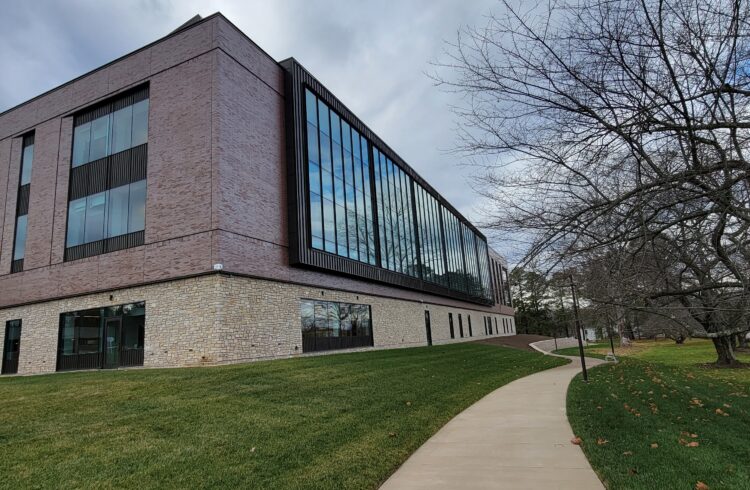
Groundbreaking ceremonies on December 15 will mark the launch of a unique project that exemplifies how new technologies are being used to address a key healthcare reform issue: the multi-billion dollar cost of repeatedly hospitalizing patients with chronic conditions such as diabetes, high blood pressure, heart failure, asthma and lung disease.
The UVA Health House project, which is being built by the University of Virginia Health System in collaboration with Habitat for Humanity of Greater Charlottesville, consists of two structurally-adapted and specially-equipped residences from which occupants can routinely transmit vital signs and other medical readings to remote caregivers. When readings are abnormal, caregivers can intervene before a patient becomes seriously ill.
“We’re excited about this project on many levels. This is the first health house project ever built by Habitat for Humanity and it is entirely funded by donations from UVA employees. Our employees will also be volunteering on construction teams,” says Karen Rheuban, MD, medical director of UVA’s Office of Telemedicine and co-chair of the Medical Center’s Community Service Committee. Rheuban also serves as president of the American Telemedicine Association.
Viewed from a broader perspective, Dr. Rheuban says UVA’s Health House project is a timely example of how chronic disease management can be shifted away from hospitals, reducing healthcare costs and keeping patients safe in their homes. “The president and Congress have identified hospital readmissions as one target for healthcare reform,” she says. “Since most readmissions involve people with chronic diseases, it makes sense to look for better ways to manage these patients. Home monitoring, made possible by affordable teleheath technologies, is an important part of the solution.”
Dr. Rheuban says that home health monitoring tools have helped the Department of Veteran’s Affairs reduce hospital readmissions by nearly 20 percent among patients in its Care Coordination and Home Telehealth programs.
When completed in fall 2010, each UVA Health House will be owned and occupied by a single woman with chronic health conditions. Each occupant’s personal physician will determine a home monitoring plan, including parameters for their readings. All transmissions will be monitored by a registered nurse at UVA’s Continuum Home Health Care. “If a patient’s reading falls outside the acceptable range, we will be talking to her to see what might be going on and checking to see if there are any external contributing factors. We’ll notify her physician, as appropriate,” explains Continuum administrator, Maggie Short.
To facilitate Health House transmissions, Comcast will provide a broadband connection in addition to telephone and television services. Intel will equip each house with a Health Guide, a small, touch-screen device with remote monitoring and videoconferencing technologies that can also be used for patient education and other forms of information-sharing. Both companies will offer their services free of charge for two years. According to Dr. Rheuban, the UVA Health House project represents a unique collaboration. “We’re blending Habitat for Humanity’s commitment to providing affordable housing solutions with UVA’s interest in offering effective chronic disease management to patients. Having companies like Comcast and Intel donate their equipment and services to this project is an added plus. Innovative partnerships of this kind can help lower healthcare costs while allowing patients with chronic conditions to remain in their homes, feeling safe, comfortable and well cared for.”


